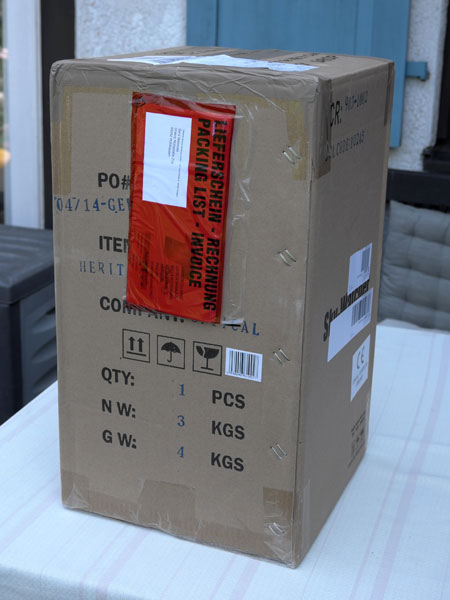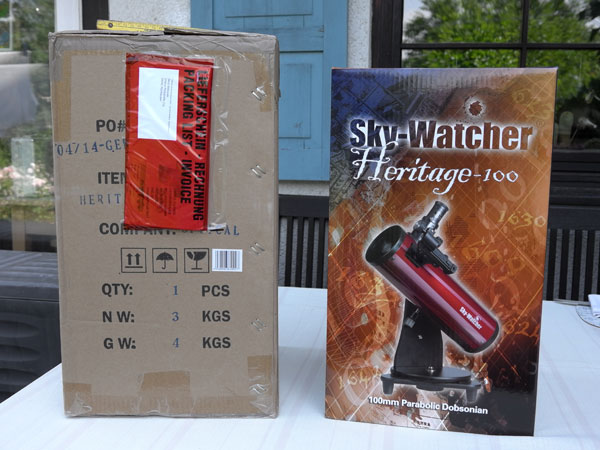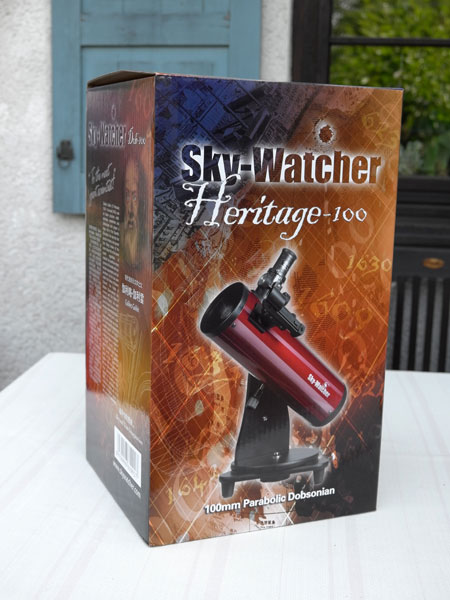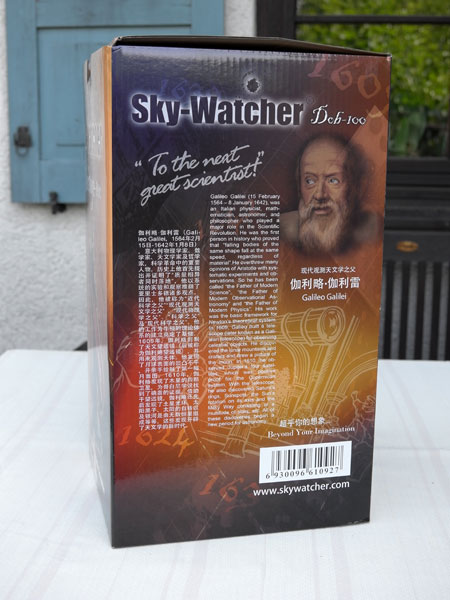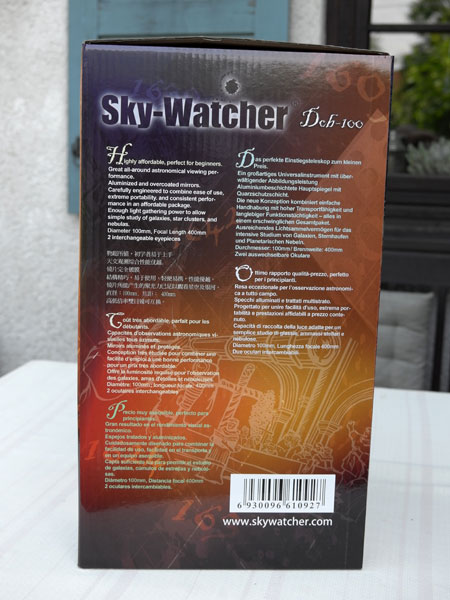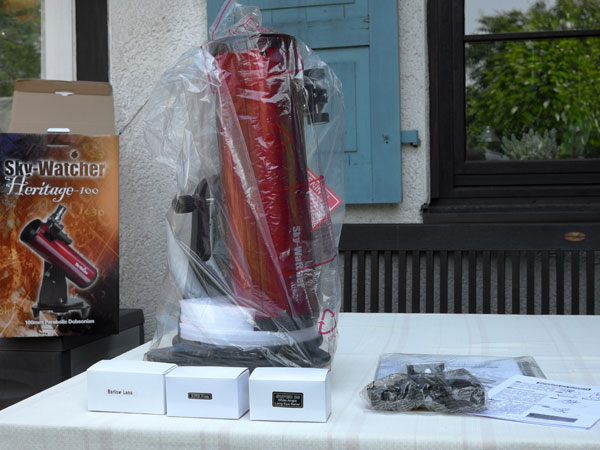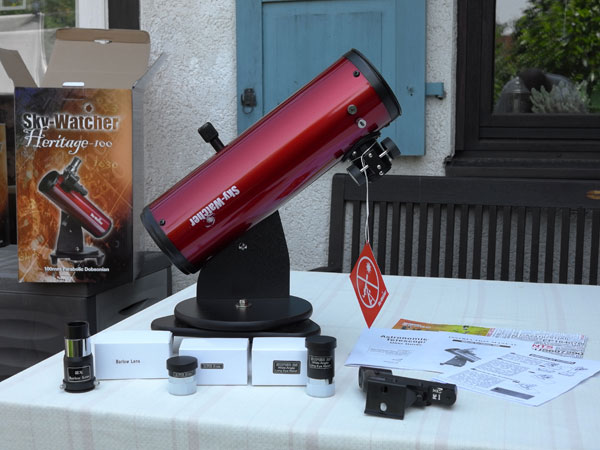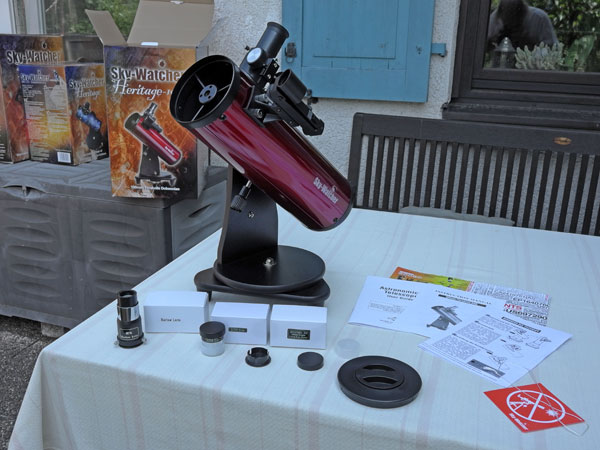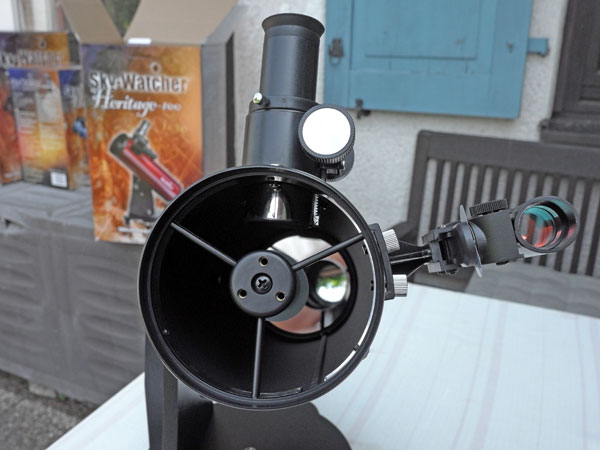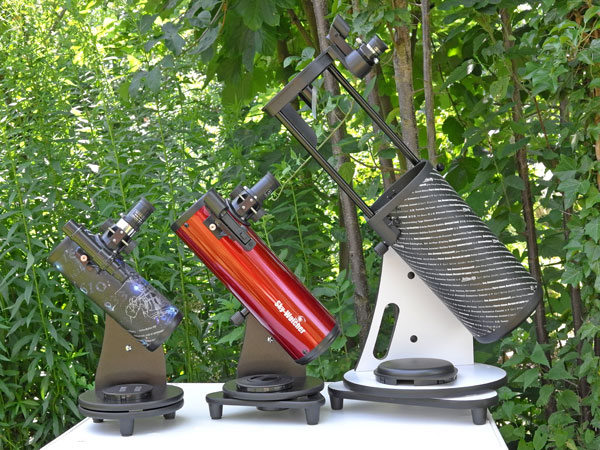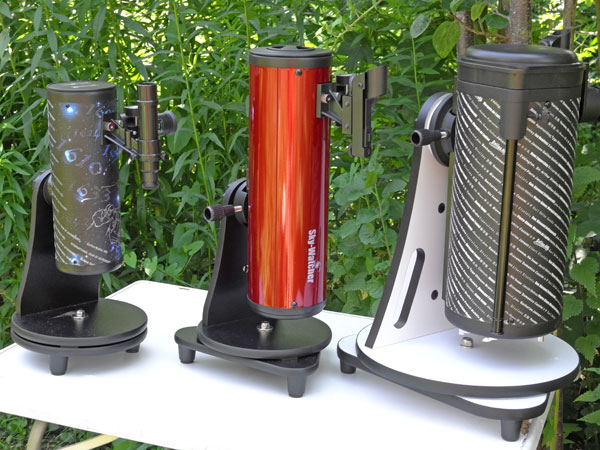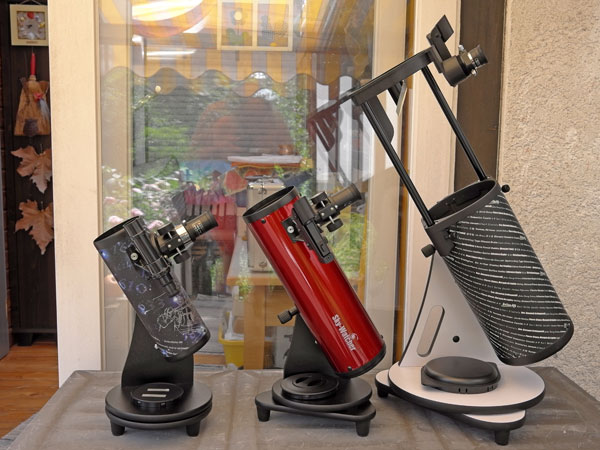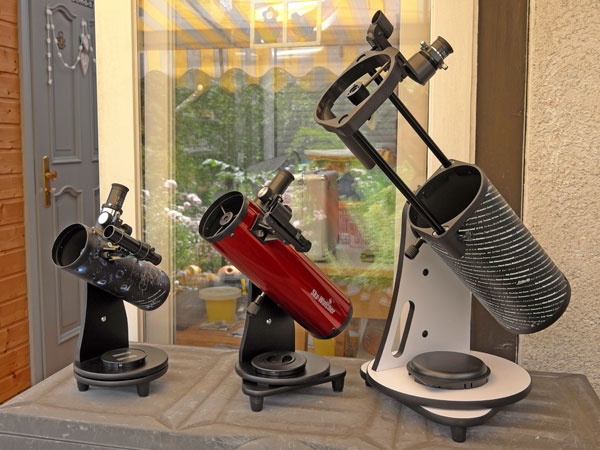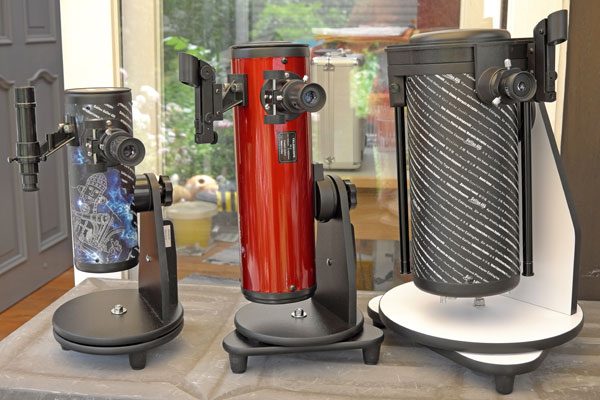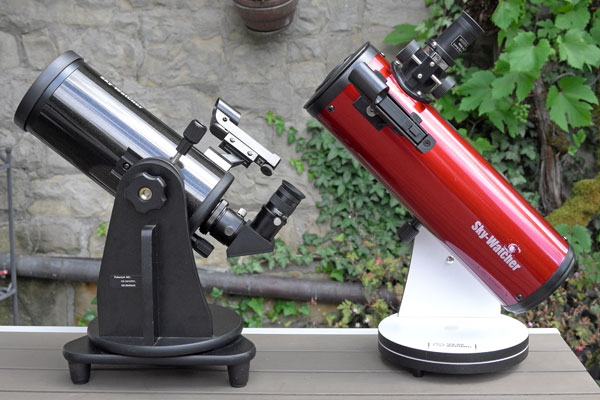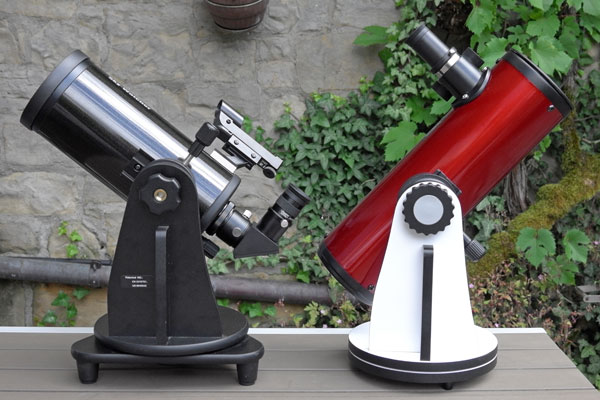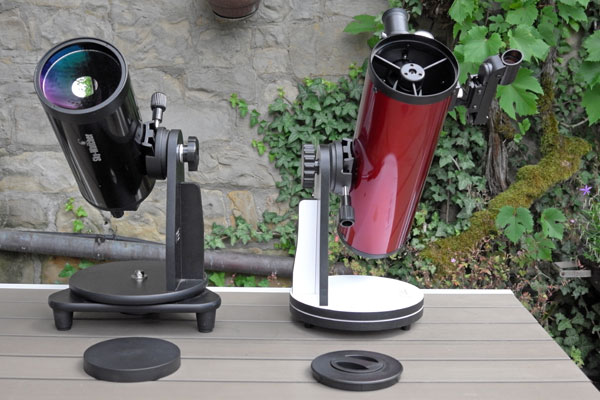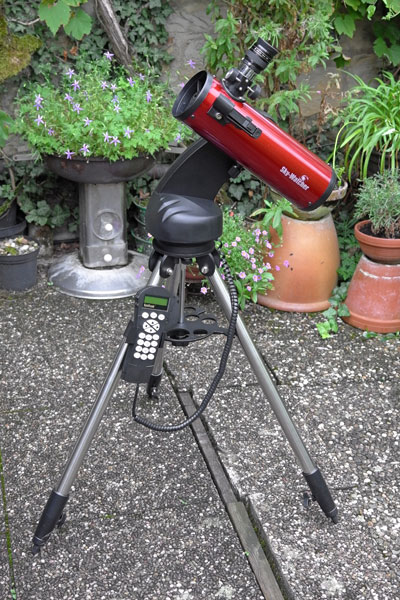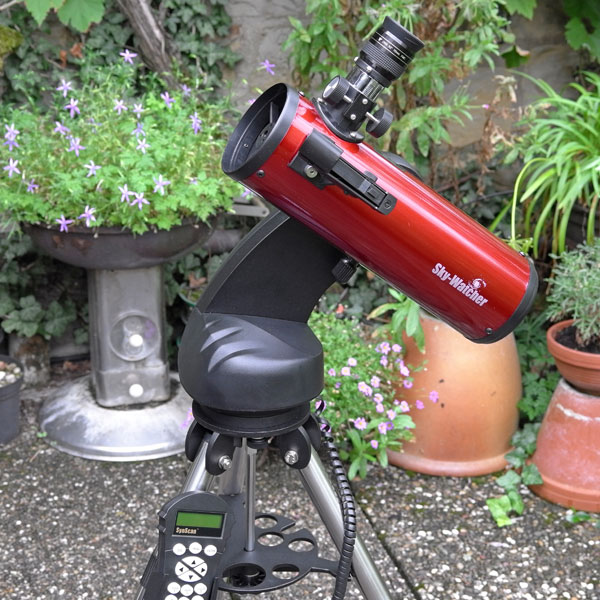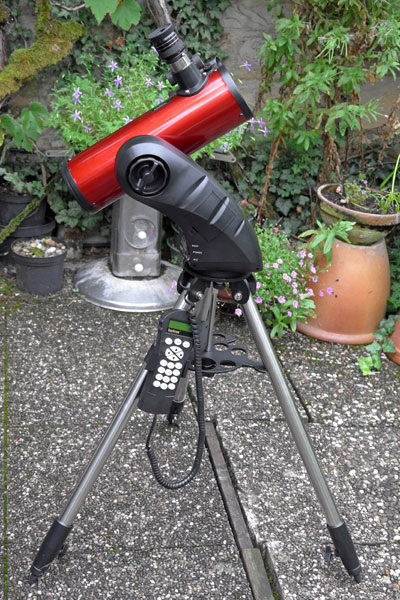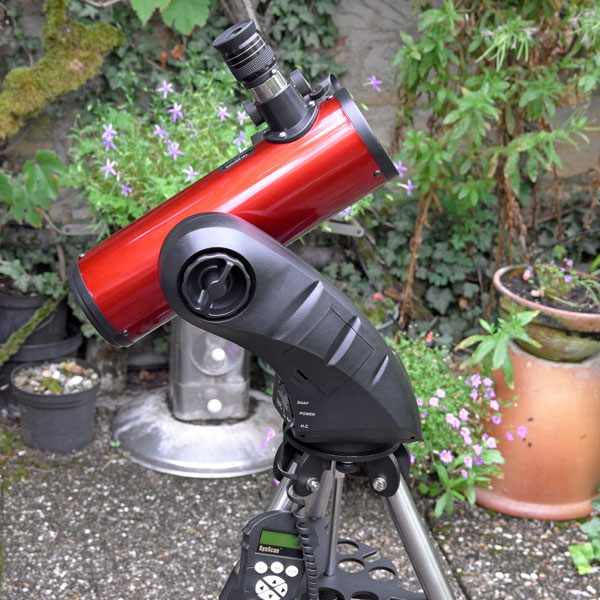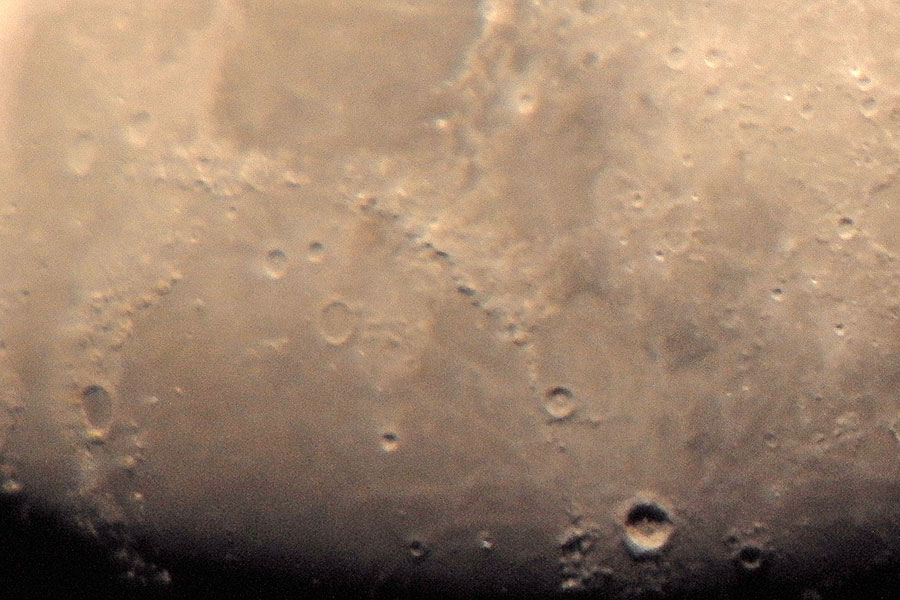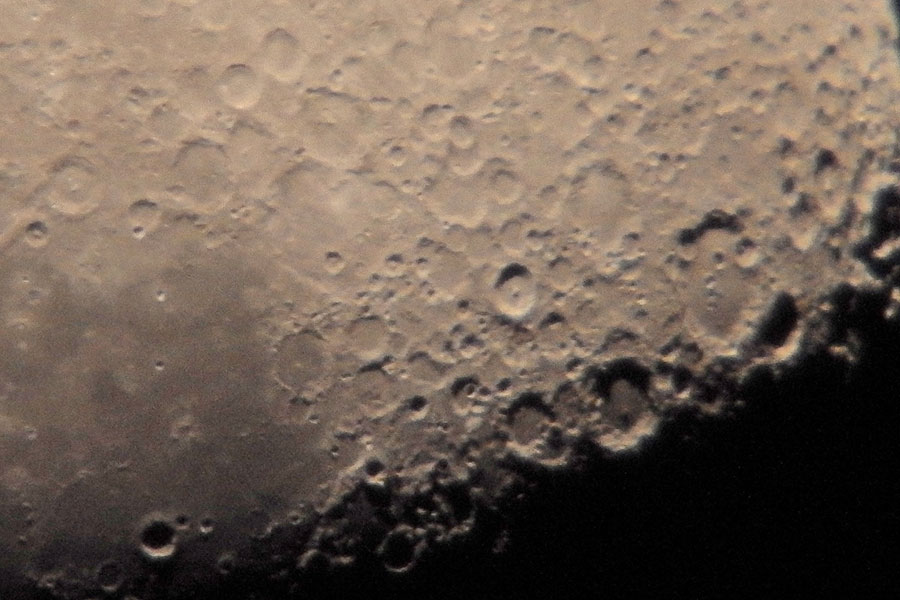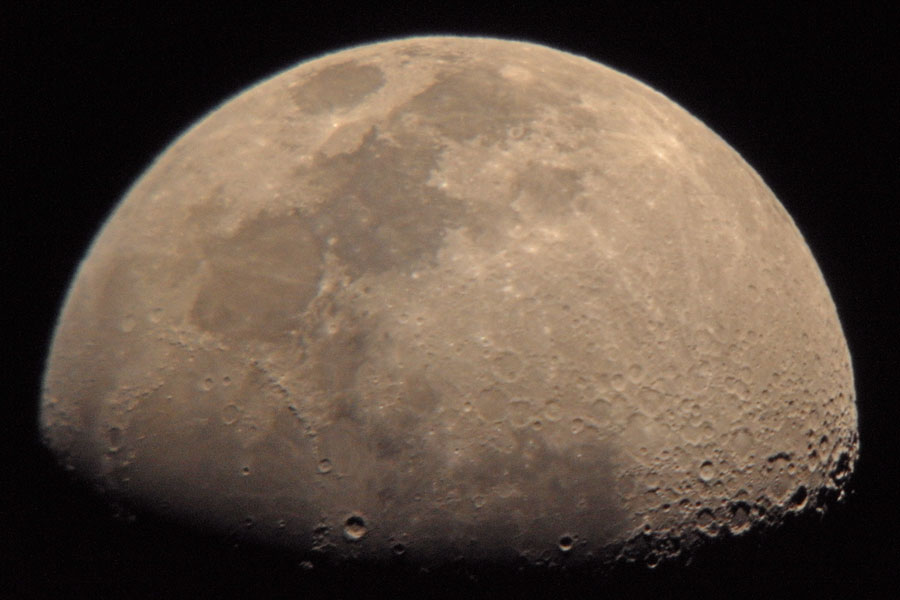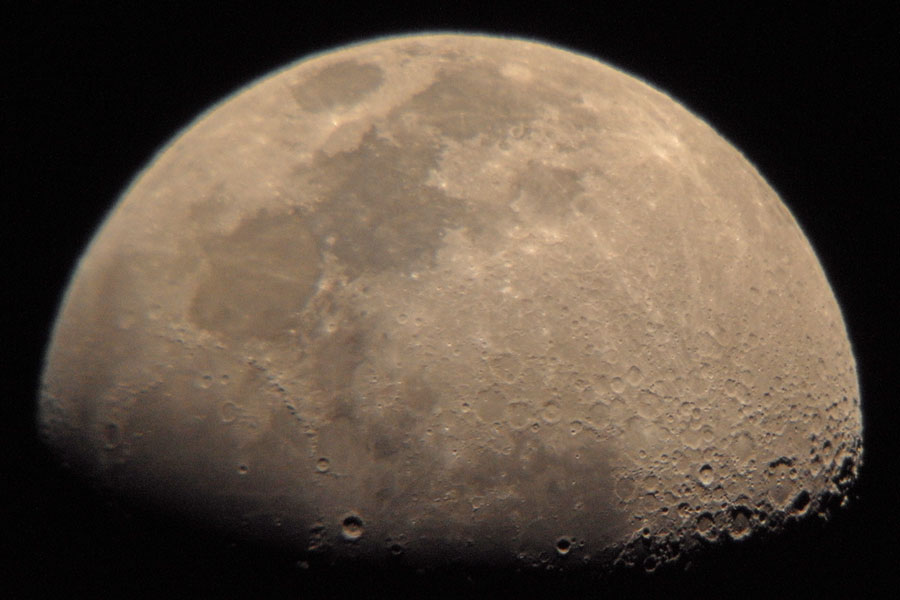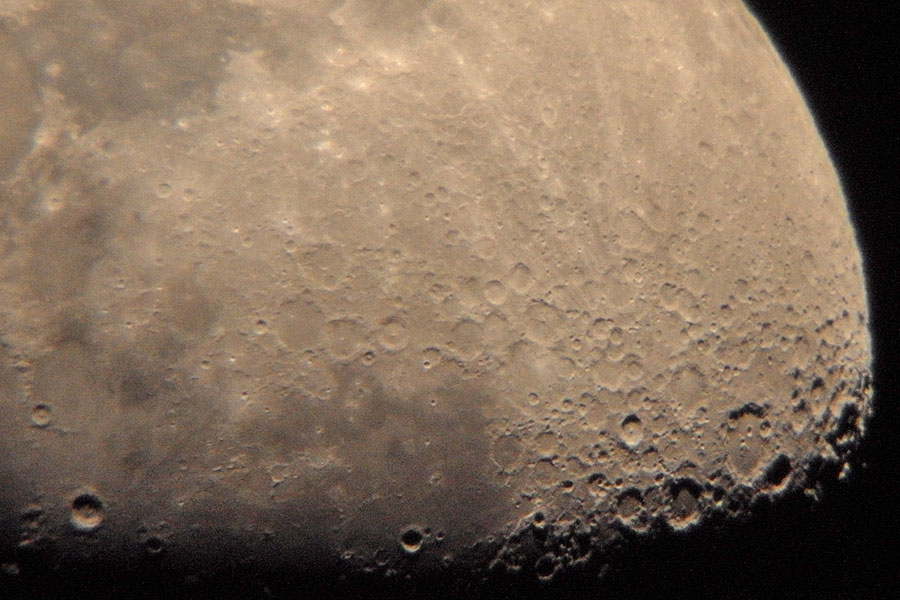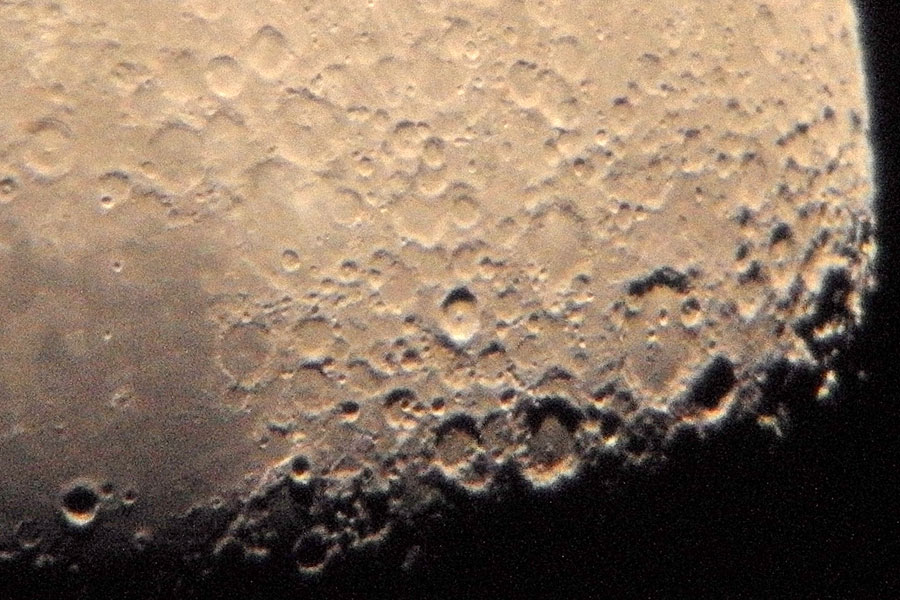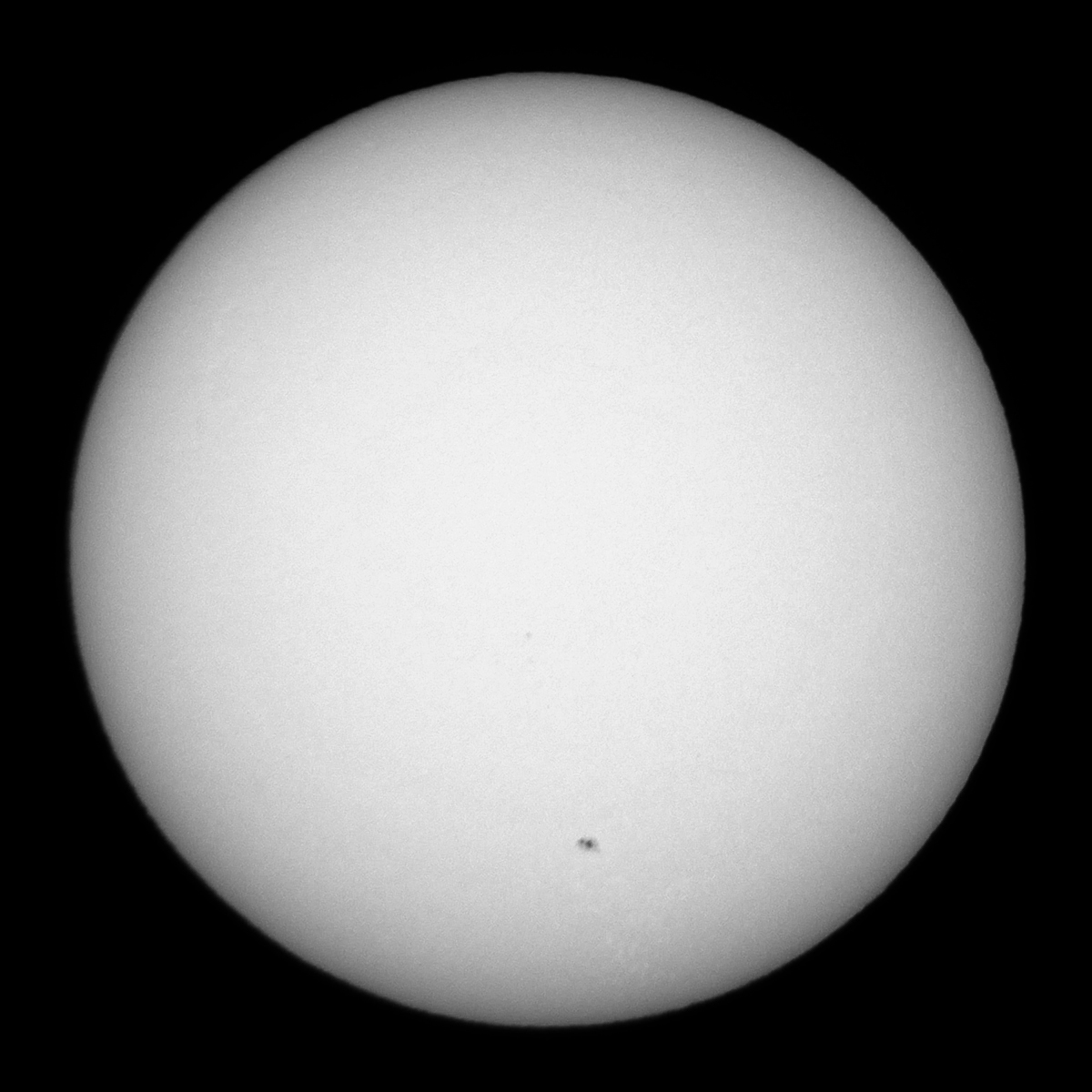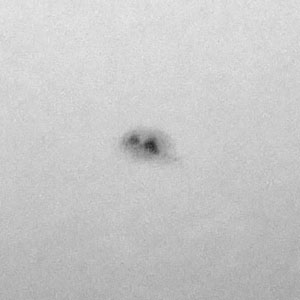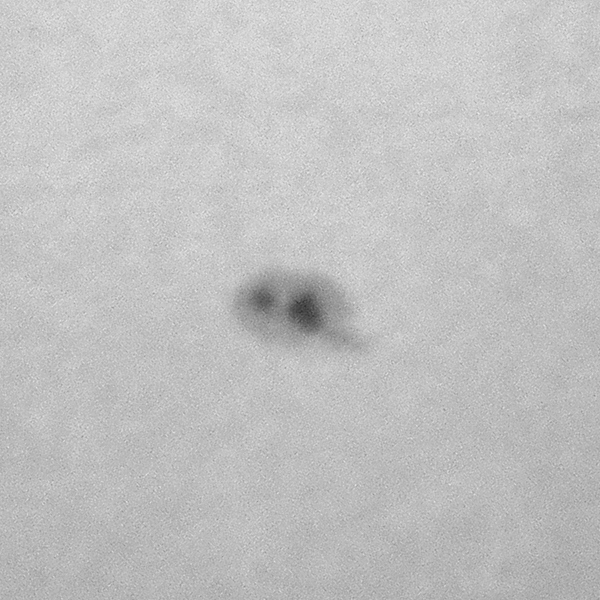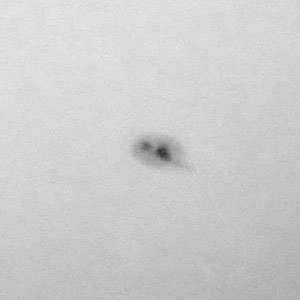Sky-Watcher Heritage 100P Information (4" Dobson)
Motivation | Look | Visited Sky Objects | Some Photo Attempts | Preliminary Conclusions | Links | Appendix: Data
Archive
On this page, I present some information about my travel telescope Sky-Watcher Dobson Telescope Heritage 100P (Dobson; purchased at the beginning of July, 2015). See the appendix for the data.
| Note: I gave the telescope away end of March 2019. I therefore can no longer report any experiences with this scope here. |
Note: This telescope is very similar to the Orion SkyScanner - 100mm TableTop Reflector telescope (or even identical to it).
Motivation
Why did I buy the Sky-Watcher Heritage 100P telescope and for what purpose? After I had bought a Sky-Watcher Heritag 76 as a travel telescope at the beginning of 2014 and was not satisfied with it, I decided in July 2015 to try the Heritage 100P, although this telescope is markedly bigger and heavier than the Heritage 76. On the other hand, it is still lightweight and small compared with the Heritage P130. The Heritage 100P turned out to be so much better than the Heritage 76 that I "retired" it and later gave it away.
I had bought the Heritage as a telescope for quick observation and travel, and in my opinion it does this job very well. Above all, it is quickly set up!
The image quality of the Heritage 100P is amazingly high for such a small and cheap telescope. Planets are rendered quite tiny because of the short focal length, but moon and sun are easy to observe. I have also observed many deep sky objects with the Heritage 100P - and also tried to observe a lot, but unfortunately did not find them. Sometimes, I get a little frustrated with this! I think, however, that the telescope is less to blame for this than the often light-polluted sky.
Incidentally, the Atik Infinity camera is not suitable for use with this telescope. It works with focal length extenders, but the achievable image quality is unfortunately insufficient. For this purpose, I have my 6" Explorer 150PDS at my disposal!
Note: Since this telescope was somewhat redundant with my Omegon Photography Scope 72/432, I decided to part with it, although I liked it very much, and gave it away to my brother at the end of March 2019.
Look
Unpacking and Assembling
|
Outer package |
Outer package and package of the Heritage 100P Outer Package: Package: |
Package of the Heritage 100P |
|
Ditto |
Ditto |
Opened package |
|
Ditto |
Content of package |
Ditto, tube "upside down" |
|
Telescope assembled, tube points into the correct direction |
Ditto |
View into the telescope |
Accessories: 10mm and 25mm eyepieces; 2 x Barlow lens; red dot finder |
||
Comparison with Heritage P130 and Heritage 76
On Omegon mini Dobson Base
|
100P on Omegon base (102 OTA on 100P base) |
Omegon base turned around |
Front view |
On Star Discovery AZ Goto Mount
|
Heritage 100P tube on mount (overall view) |
Ditto (detail) |
Heritage 100P tube on mount, turned around (overall view) |
Ditto (detail) |
Visited Sky Objects
I visited (and documented...) the following sky objects with the Sky-Watcher Heritage 100P:
- Moon, Sun (spots; also with Mercury transit)
- Venus (crescent), Jupiter (with moons), Saturn (with ring)
- With GoTo (spring): M 31, M 35, M 36, M 37, M 38, M 42/43, M 44, M 45, Mel 25, NGC 884/869
- Without GoTo (spring): M 36, M 38, M 42/43, M 45, Mel 25
- With GoTo (autumn): M 13, M 92, M 31
- Without GoTo (autumn): M 2, M 13, M 92, M 8/NGC 6530, M 31, M 15, M 103, NGC 663, Mel 20, NGC 457, M 81/82, Cr 399
- With GoTo (Atik Infinity camera, autumn): M 15, M 27, M 56, M 57
This list is probably incomplete, because I did not document my observations well. But, at least, it shows, which objects can be found with this telescope.
Highlights
- Sun with Mercury Transit 2016
- Planets: Venus (crescent; Venus Crescent 2017), Jupiter (with moons), Saturn (with ring)
- DSO (globular cluster): M 13, M 92, M 15
- DSO (star cluster): M 35, M 44, M 45, Mel 20, NGC 884/869
- DSO (nebulae): M 42/43
- DSO (asterisms): Cr 399
Some Photo Attempts
At the beginning, I took only photos of the moon, the sun (which was transited by Mercury at one such instance in 2016), and Venus with this telescope. In December 2017, I attempted first photos with the Atik Infinity camera.
Moon Photos 2015
See also the photos in larger versions on page Photos of the Moon with Heritage 100P - 2015.
Here are some very similar examples from July 2015 after I had collimated the telescope (Leica X Vario held to the eyepiece):
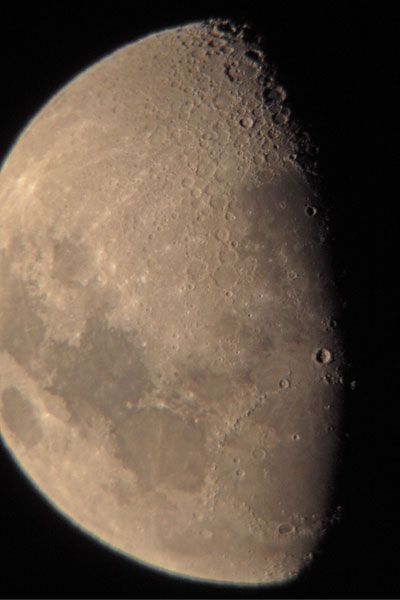 |
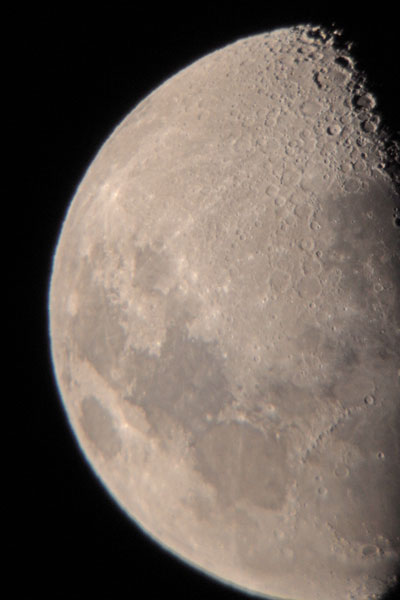 |
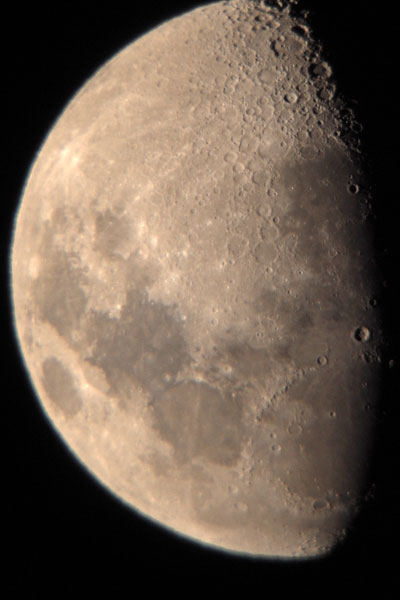 |
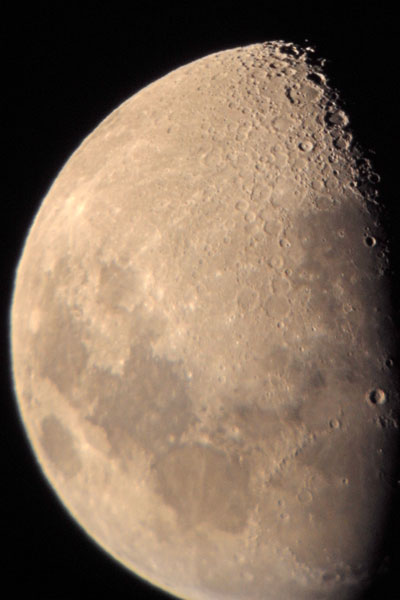 |
Here are some sections from the photos above:
Moon Photos 2016
See also the photos versions and an enlargement on page Photos of the Moon with Heritage 100P - 2016.
For the following moon photo attempts, I mounted the Leica X Vario permanently on the 32mm eyepiece. The telescope magnification was only 12.5 x and the camera lens was set to 70 mm (46 mm) (I as far as I remember..).
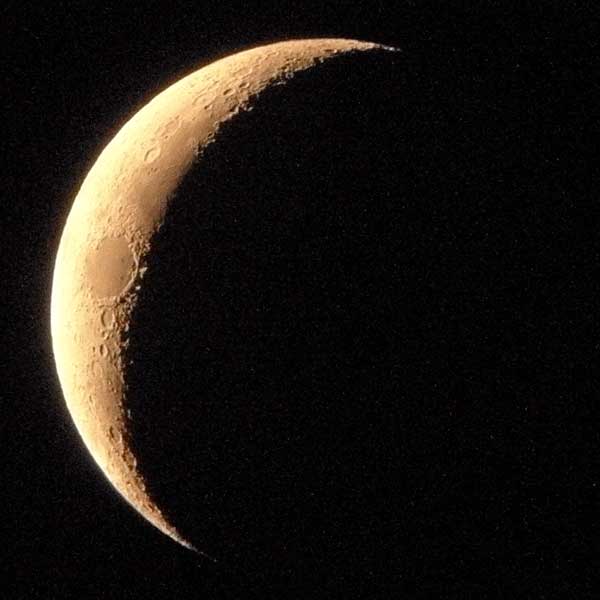 |
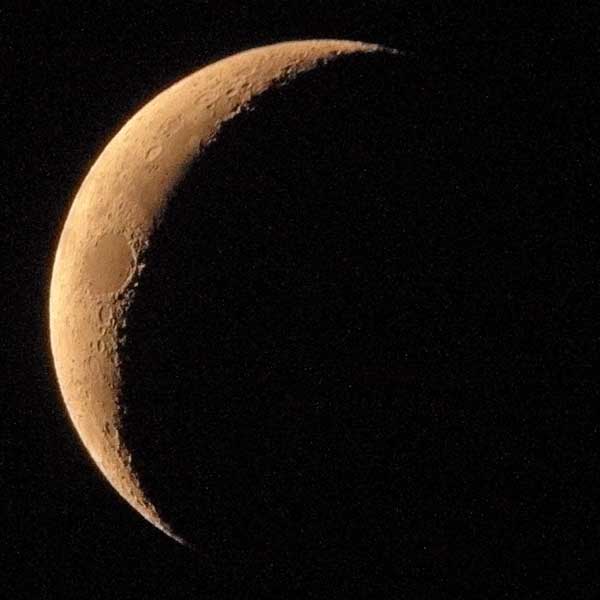 |
 |
Enlarged sections:
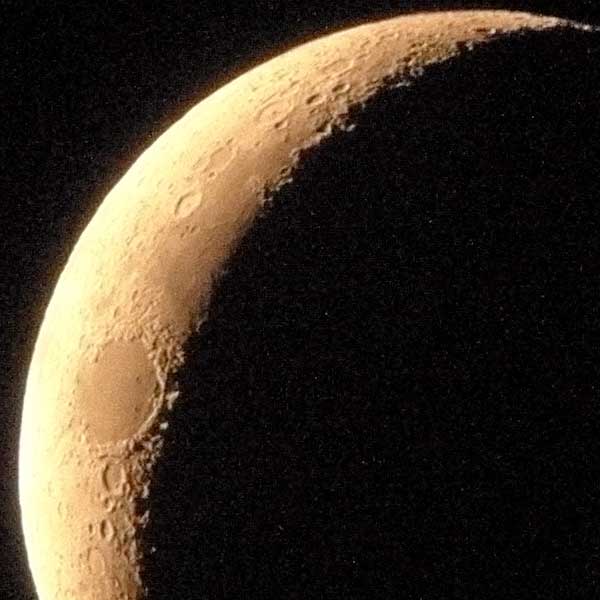 |
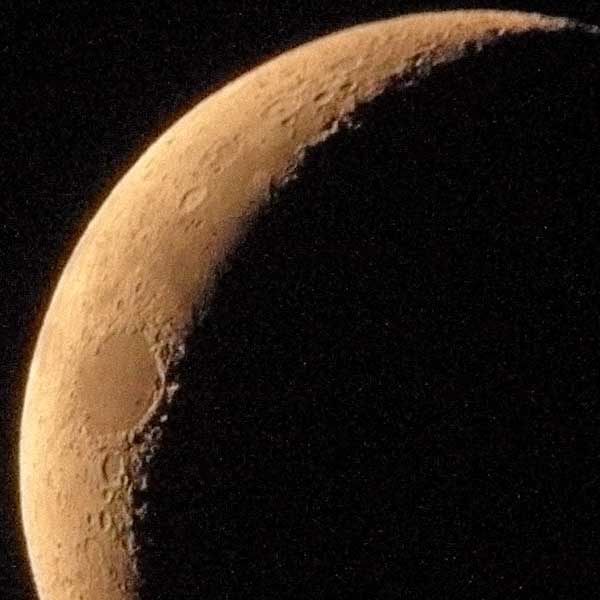 |
 |
Sun Spot 2016
See also page Sun Spot 2016 with more photos.
Mercury Transit 2016
See also page Mercury Transit 2016 which offers more photos and extended information.
Here are only a few photos, also as enlarged sections, from the initial phase when Mercury entered the sun (taken with 32 mm eyepiece and Leica X Vario mounted fix to the eyepiece):
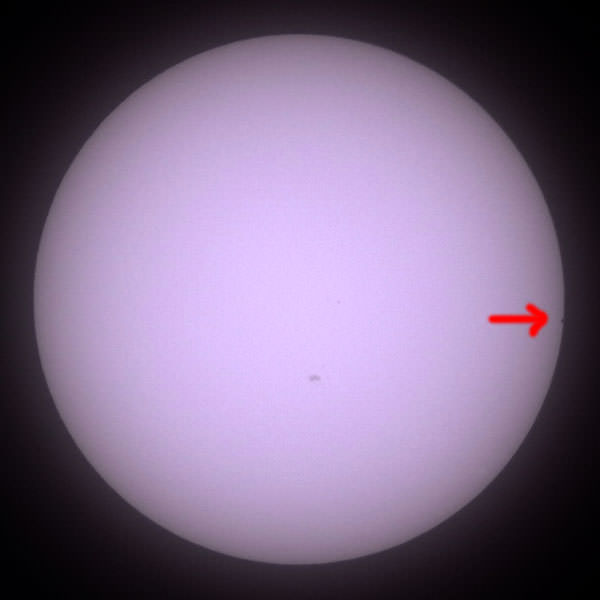 |
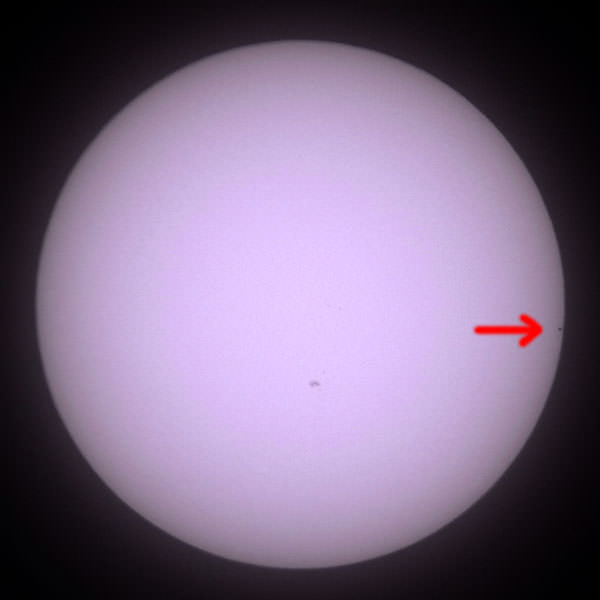 |
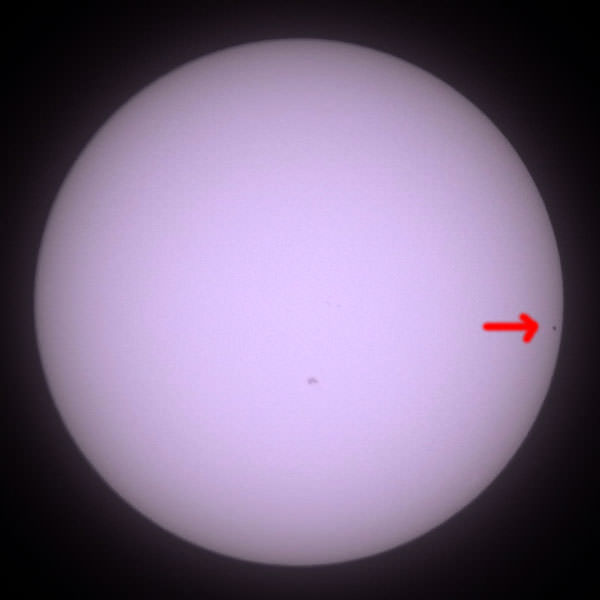 |
||
13:15 approx. |
13:17 approx. | 13:21 approx. |
||
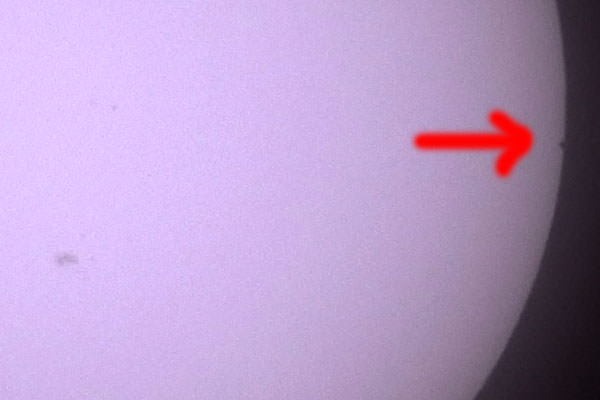 |
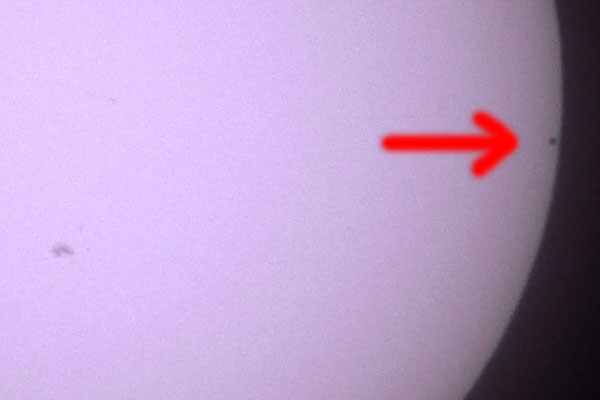 |
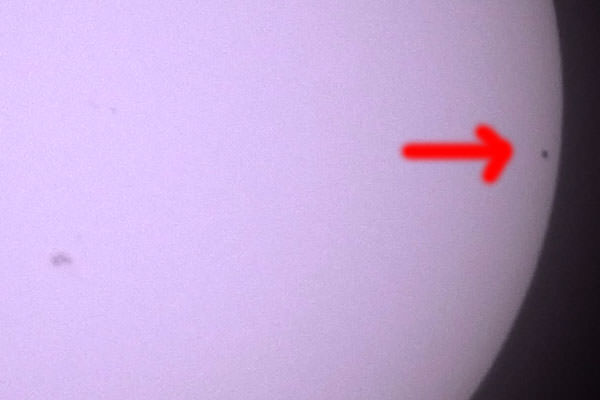 |
||
Section from photo above |
Ditto |
Ditto |
Venus Crescent 2017
On March 11, 2017, I took photos of the Venus crescent with my Heritage 100P and the Ricoh GR, the best of which are shown below:
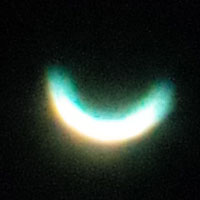 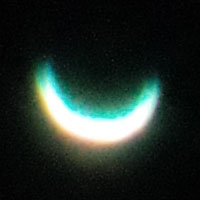 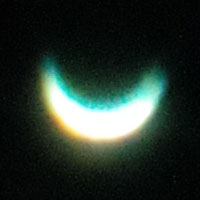 |
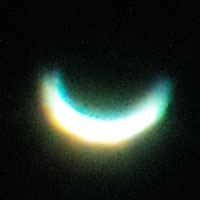 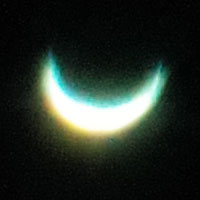 |
Moon Photos 2017
On May 3, 2017, I took photos of the Moon with my Heritage 100P and the Ricoh GR, the best of which are shown below:
7 mm Eyepiece (57 x) |
||
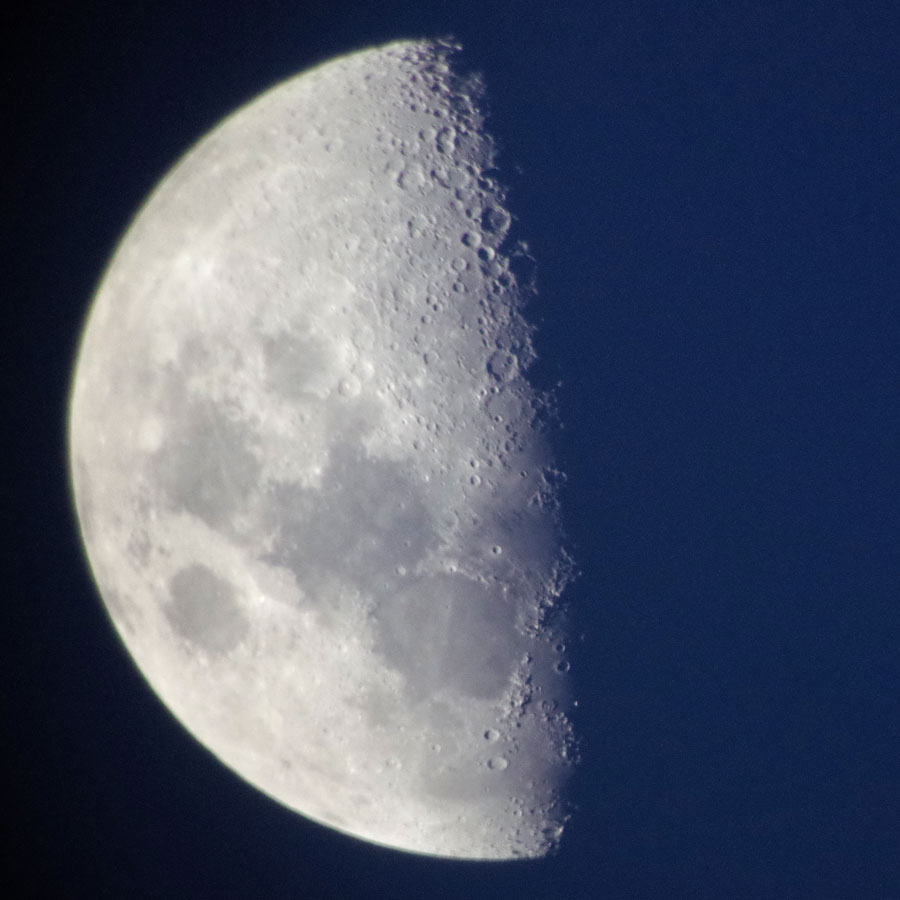 |
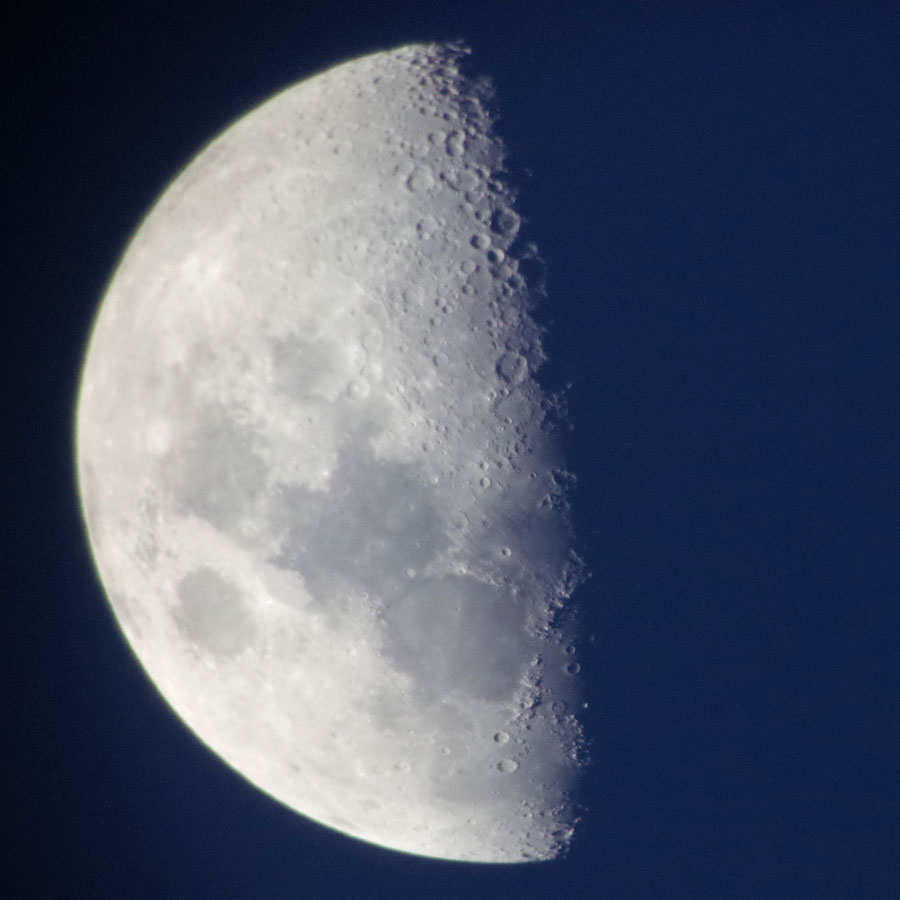 |
|
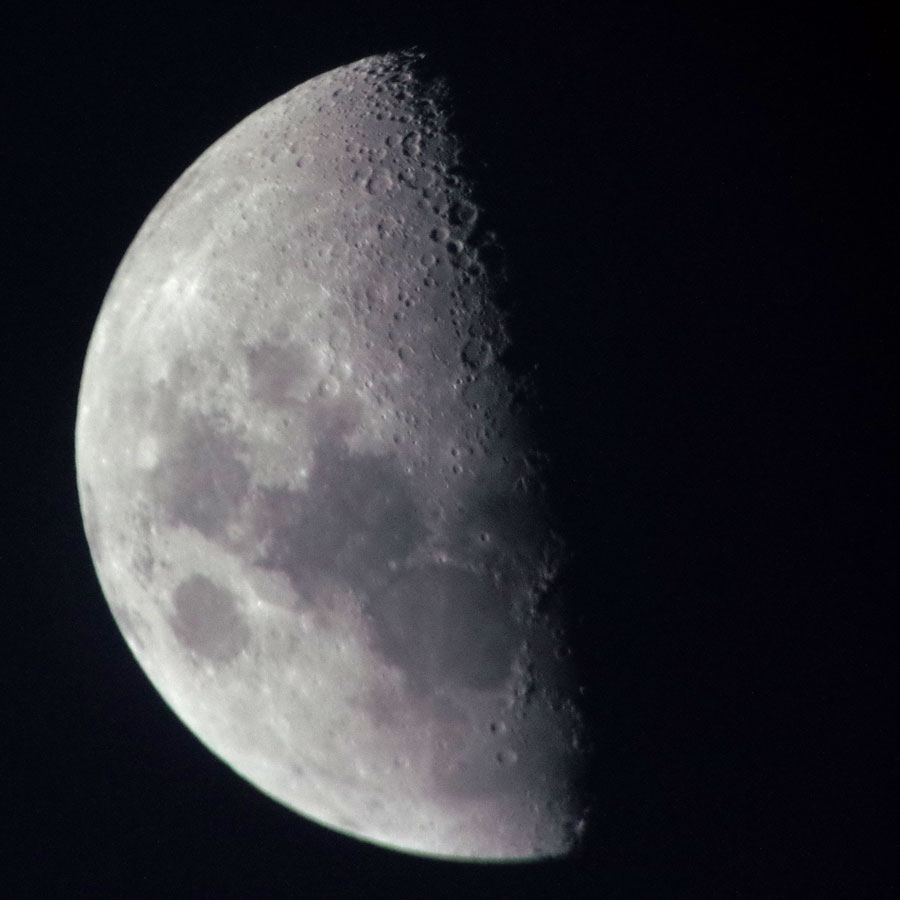 |
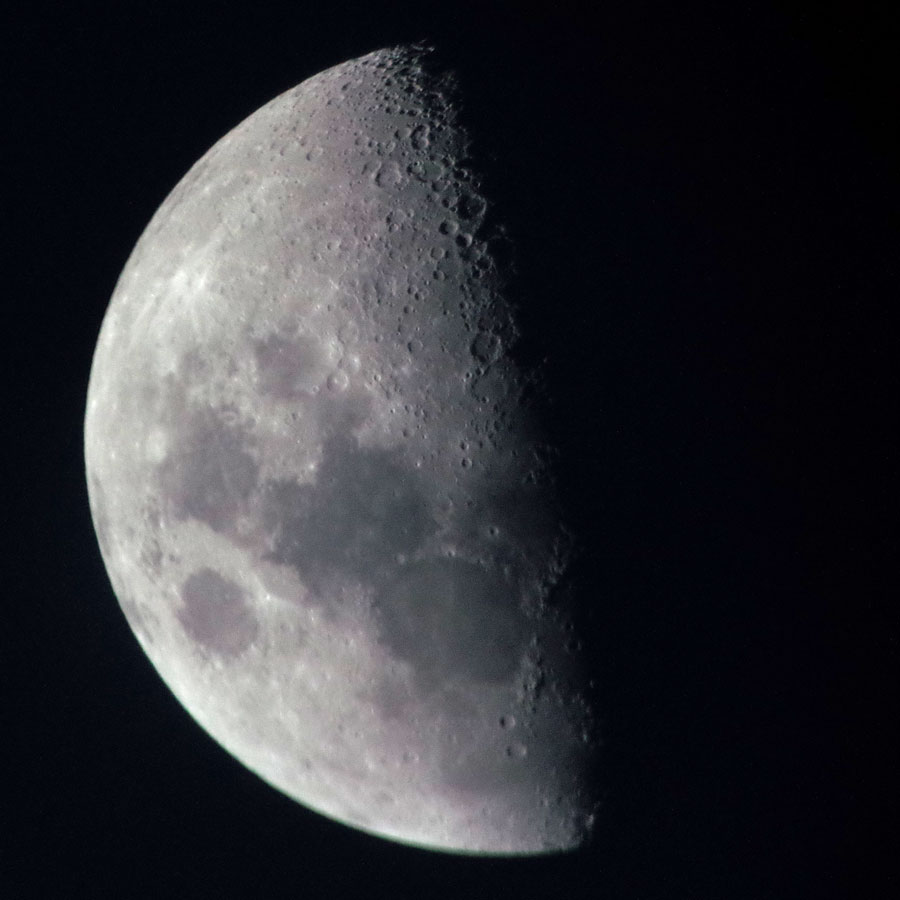 |
|
4 mm Eyepiece (100 x) |
||
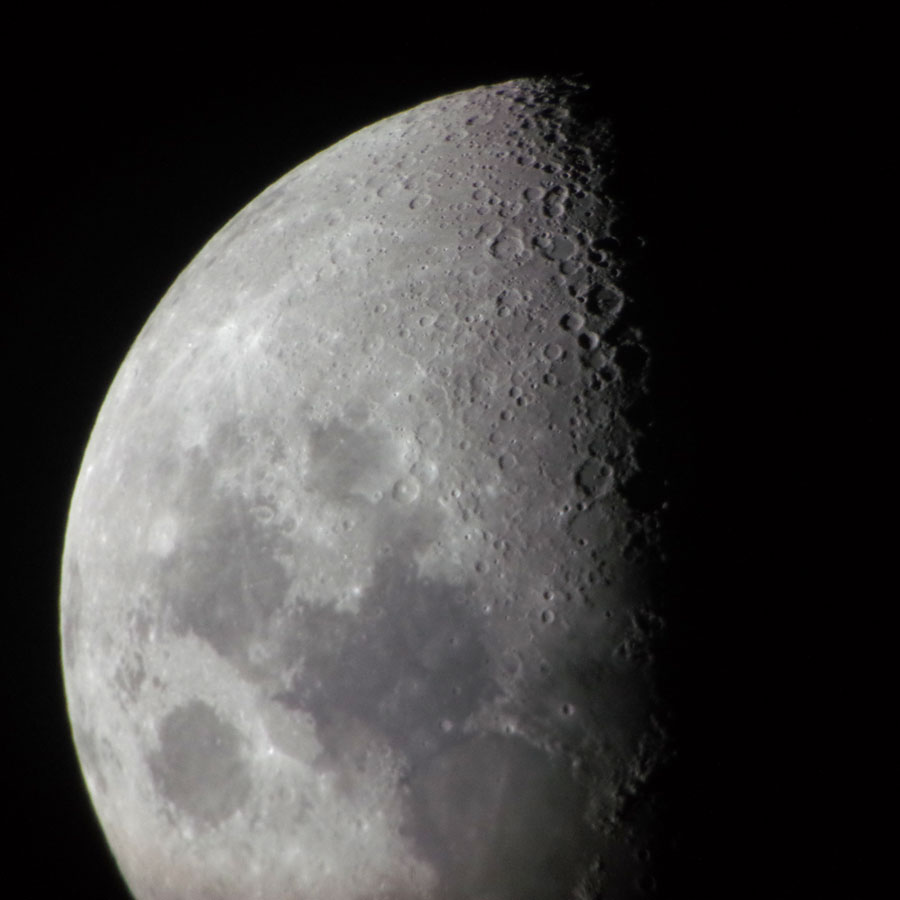 |
 |
|
Jupiter Photos 2017
On May 3, 2017, I took photos of Jupiter an its moons with my Heritage 100P and the Ricoh GR, the best of which are shown below:
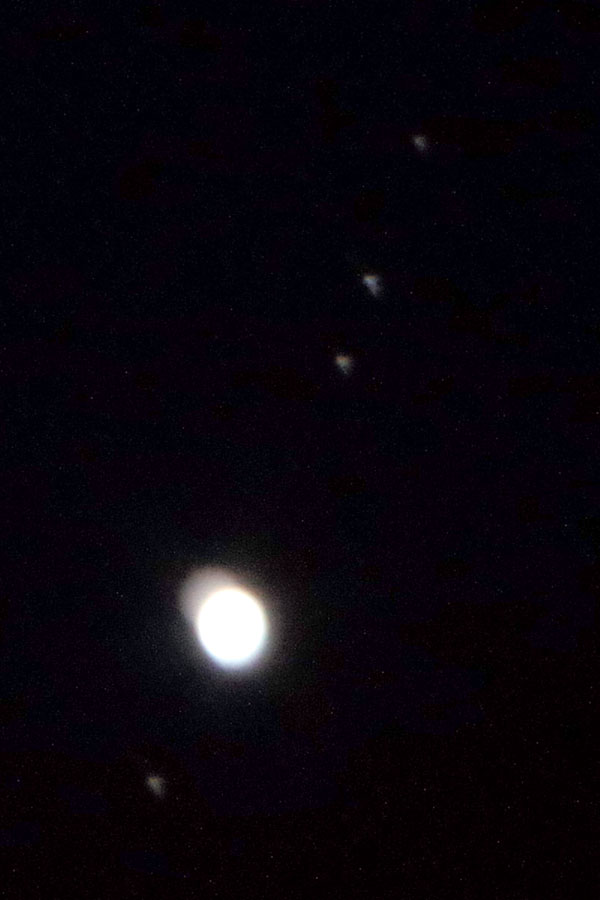 |
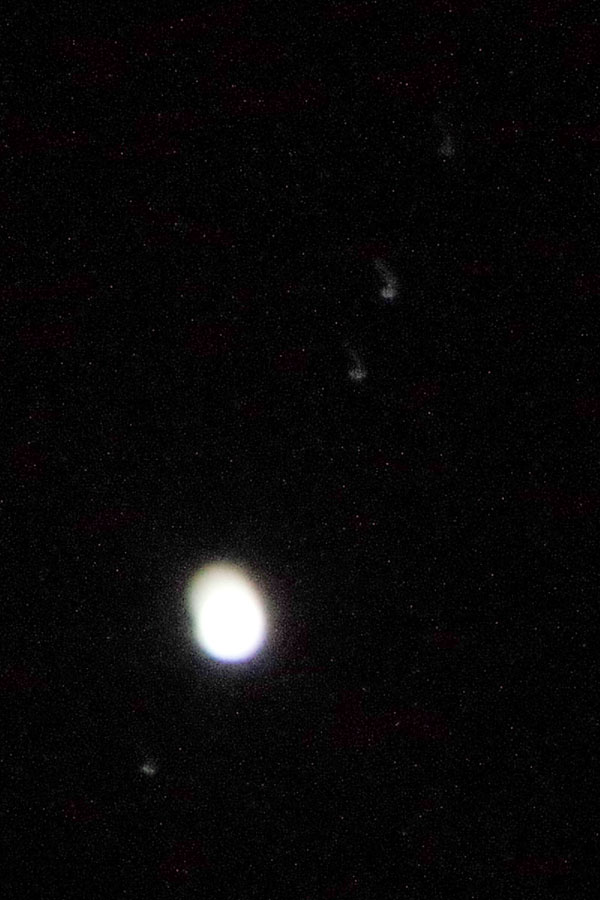 |
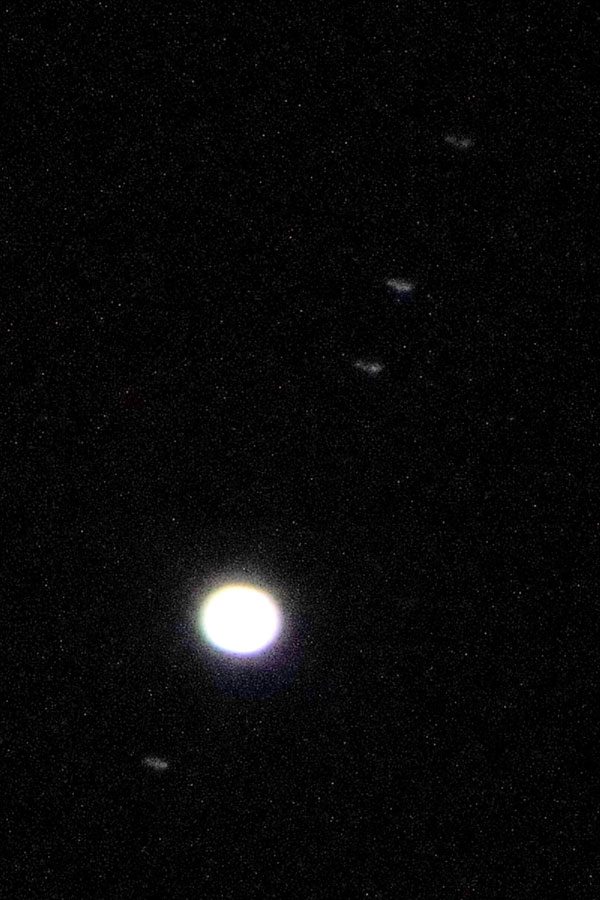 |
||
With Atik Infinity Camera
The following photos are post-processed versions of the original photos. They were taken with an additional Explore Scientific 2 x Focal Extender (a kind of a Barlow lens) so that the focal length was about 800 mm; this was necessary to come into focus.
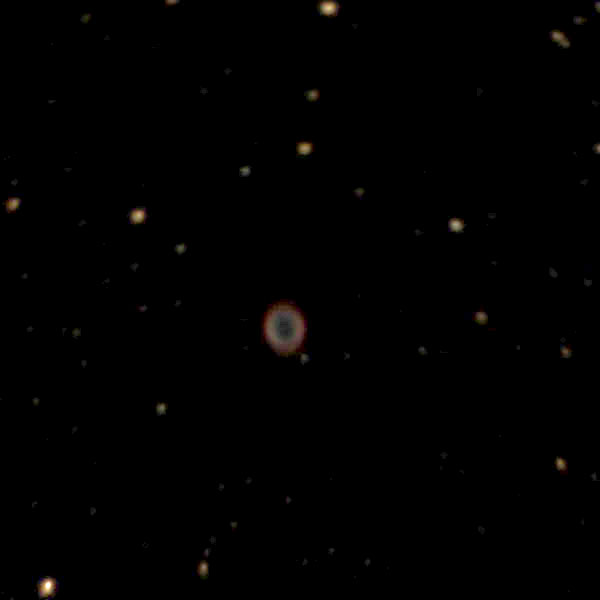 |
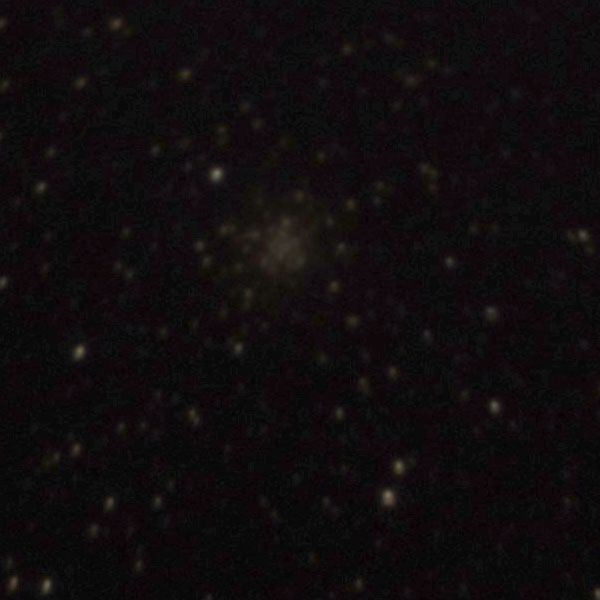 |
|
M 57 (Ring Nebula in Lyra) |
M 56 (Lyra) |
|
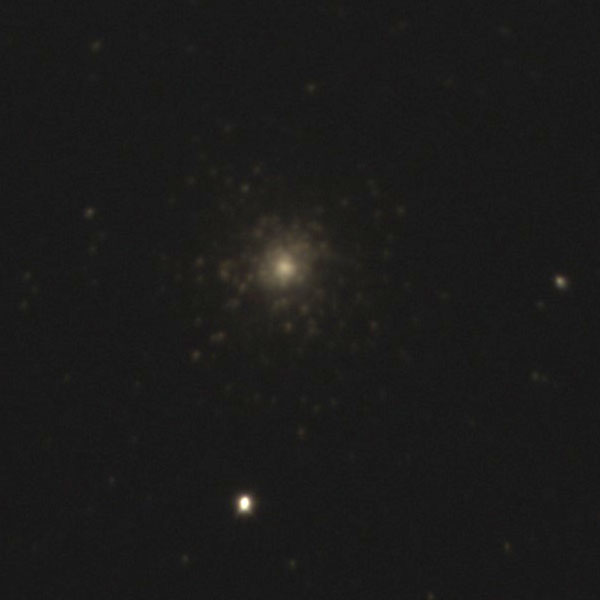 |
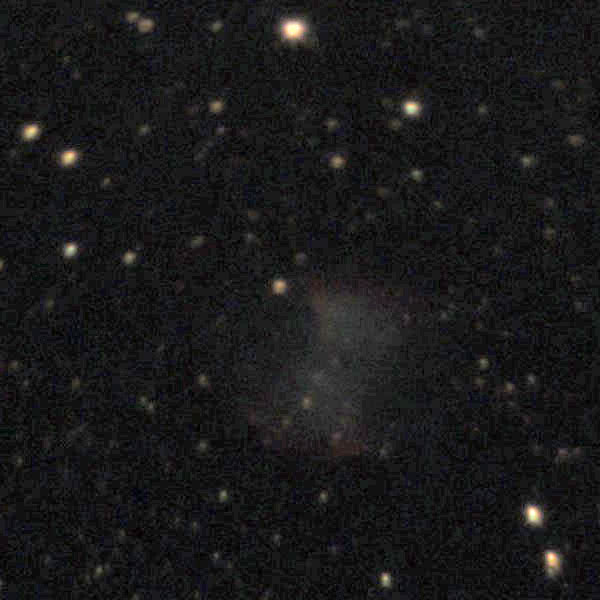 |
|
M 15 (Pegasus) |
M 27 (Dumbbell Nebula in Vulpecula) |
Preliminary Conclusions
My experiences with the Heritage 100P telescope (purchased at the beginning of July, 2015) are quite encouraging up to now. It was purchased as a "quick use" and travel scope and suits these purposes well. Image quality is surprisingly good for such a cheap and small telescope. The planets Venus, Jupiter, and Saturn can be identified well by their details (crescent, stripes, moons, ring; the Cassini ring cannot be identified, however; perhaps the air turbulence is too high, or the magnification is too low) - almost as good as with the Heritage P130. But note that planets are quite tiny because of the low magnification. Since I tried to adjust this telescope already shortly after purchase, this judgment refers to an "adjusted state." Obviously, the parabolic mirror shows its advantage compared with the Heritage 76, which seems to have a spherical mirror.
Photo Attempts (Moon, Sun Spot, Transit of the Mercury)
End of July 2015, I made my first attempts in taking photos of the moon with this telescope. The 1:50 method (camera held to the eyepiece) requires many attempts and is frustrating, but the final results are quite OK. However, as with other photo attempts, I did not succeed in achieving uniform sharpness across the image. In April 2016, I took further photos of the moon, but used the projection method this time. Because of the 32 mm eyepiece that I used, the magnification was lower, but the focus seems to be more evenly distributed thanks to the fixed installation of the camera.
In May 2016, I used the 100P to photograph the Mercury transit of the sun, because I was not able to use my 8" GSD 680. Before that, I made a few test photos of sun spots. Mercury was very small, but the telescope did its job well (I used different eyepieces and, of course, a sun filter).
Deep Sky Objects
In summer/autumn 2016, in spring 2017, and in September 2017, I also observed deep sky objects with the Heritage 100P (see here). It resided in part on its own Dobsonian base (especially on vacation), and in part on the Star Discovery AZ GoTo mount. I was amazed at how many objects I was able to find with this small telescope, although there were still quite a few objects that I was not able to find...
Comparison with Sky-Watcher Heritage P130 (Dobson)
Compared with the Heritage P130, I particularly like the low weight (this telescope can still be described as "lightweight"), the smaller size (for transport), and the simple-to-use mount (the telescope is not as top-heavy as the P130 and does not have to be locked again and again).
Quality-wise, the P130 clearly has the lead and magnifies about 1.5 x larger than the 100P, given the same focal length of the eyepiece. The same accounts for the different types of maximum magnification (see Data). It can also be collimated (adjusted) correctly, while for the 100P only the secondary mirror can be adjusted. Because the 100P can be grasped and used quickly and easily, it was significantly more often in use than the P130, which I gave away in mid-Apil 2017.
Comparison with Sky-Watcher-102 OTA (Maksutov-Cassegrain)
In the summer of 2016, I bought a Sky-Watcher Skymax-102 OTA (a tube only) because a dealer persuaded me to do so. It is a Maksutov-Cassegrain telescope with approximately the same opening as the Heritage 100P (with probably more obstruction), but more than three times the focal length, and thus, you get more than three times the magnification for the same eyepiece. At maximum, both have a magnification of about 200 x, at least, if you calculate with a factor of 2 x instead of 1.5 x for the Heritage.
Is the Heritage 100P obsolete for me now? As far as the sun, moon, and planets are concerned, I am tempted to say, yes, or would at least prefer to use the Skymax-102. With my existing eyepieces, the Heritage 100P just reaches a magnification of 100 x (4 mm eyepiece). With the Skymax-102 I can already go far beyond the favorable magnification (the 7 mm eyepiece reaches 186 x, the 6 mm eyepiece exceeds with 217 x already slightly the recommended maximum of 204 x). But for certain deep sky objects you might, according to Stoyan, even go to 300 x, provided the seeing permits this. The 4 mm eyepiece reaches a magnification of 325 x, but then the image is, for my taste, no longer good...
In contrast to the Skymax-102, the Heritage 100P has the advantage of a wide field of view and a "faster" focal ratio (1: 4 versus 1: 12.75). Such a "fast" focal ratio puts higher demands on the eyepieces, but now I have some better eyepieces in my collection... In this respect, the 100P should be more suitable for deep sky observations, in particular, for more extended objects. I have already used it, more or less successfully, for this purpose, but a direct comparison with the Skymax-102 on the same sky objects is still lacking. I cannot say anything about the deep sky abilities of the Skymax-102, whereas I was disappointed by those of the Meade ETX 90/EC (I was barely able to see the Andromeda galaxy, but this may also have been due to the observation conditions...).
A comparison of the image quality at day-time between the Heritage 100P and the Skymax-102 ended in favor of the latter; and the dealer, who recommended the Skymax to me, had already suggested this. The Heritage 100P showed color fringing, which the Skymax did not exhibit, and the Skymax image appeared more contrasty overall. A comparison at night is still on the waiting list...
This may, perhaps, be a comparison of apples with pears, as people say, but I have come to the provisional conclusion that the one need not make the other (or a similar one) obsolete.
Comparison with Omegon PS 72/432 (Refractor)
I tested briefly how the Omegon refractor PS 72/432 compares with the Sky-Watcher Heritage 100P, which plays in a similar league. The Heritage 100P has a larger aperture, but I have read again and again that a 70 mm refractor corresponds to about a 100 mm Newtonian telescope because it has no obstruction.
First I tested the refractor at the crescent moon (3rd day after New Moon), where the sky was still quite bright at the beginning, and compared it with the Heritage 100P at similar magnifications. Since the crescent of the moon was a bit wider than the day before, I was able to see craters and parts of the Mare Crisium well and to judge the views in both telescopes. At low magnifications, the view in the refractor showed clearly more contrast and was sharper than that in the 100P, at 100 x magnification the view seemed to be slightly brighter in the Heritage 100P, but probably less sharp than in the PS72. The latter might also be due to my difficulties with adjusting the focus on the 100P.
I also tested the telescopes on Mars and Saturn with up to 100 x magnification. Saturn appeared slightly sharper in the refractor, with Mars it was sometimes the same and sometimes the other way round, not allowing a clear statement. The results for the PS72 were in any case much better than my first attempts on Mars the day before.
With the refractor, I was able to achieve a much better image quality on stars than on the first tests. I saw this very nicely when I observed the coat hanger Cr 399, which can still be seen completely in both telescopes: It looked nice in both telescopes (fine star points) - perhaps the PS72 had a slight edge here... The double star Double Double in Lyra was another "hard test" for both telescopes: From a magnification of about 100 x on, you should be able to see 4 stars, that is, two star pairs. My Maksutov telescopes had passed this test well in August 2018 (even below a magnification of 100 x), but with the Heritage 100P I had tried in vain to further resolve the two main stars in autumn 2017. This was the same again even with a magnification of 114 x! The PS72 refractor, on the other hand, was able to resolve one double star at a magnification of 108 x, and for the other one I was able to at least guess that it was a double star.
I also observed a number of deep sky objects with both telescopes at different magnifications; this was less about sharpness than about brightness: M 13 (Hercules Cluster), M 31 (Andromeda Galaxy) and M 57 (Ring Nebula in Lyra). All of them were well to see with both telescopes, but the Ring Nebula was not a ring. My impression was that the objects in the Heritage 100P were perhaps a little bit brighter and perhaps a bit more extended. This would not surprise me at all, considering the larger aperture and exit pupil of the Heritage 100P (but note the obstruction...). Overall, however, both telescopes delivered quite similar results.
Conclusion: The Omegon refractor PS 72/432 delivers a somewhat better performance than the Heritage 100P at the moon and at double stars, and is perhaps slightly inferior to it at DSOs.
Use on Different Bases
The Heritage 100P comes with its own simple Dobsonian base, which is ideally suited to its size (see photos above). However, because of the high center of gravity, it is not at all difficult to overturn the base. I also use the Heritage 100P on the Omegon base, which I have finally put into a working condition. This base is, however, much easier to overturn than the 100P's native base because the base plate is smaller.
And last but not least, I use the 100P tube on my Star Discovery AZ GoTo mount, especially to observe deep sky objects. On vacation, however, I do not take the GoTo mount with me, and therefore succeed then only with larger or brighter objects.
Astrophotography
The Heritage 100P is designed for visual observation. With a camera like the Atik Infinity, this tubus does not come you into focus. The remedy is provided by using a Barlow lens or a focal extender; both move the focus further inwards. Both multiply the focal length by their magnification factor, which may be desired, but unfortunately the aperture ratio decreases by the same factor, so that longer exposure times are required, which is less desirable.
In my tests with a cheap Sky-Watcher 2 x Barlow lens, the results were not convincing at all. With a 2 x Explore Scientific focal extender they were better, but also not convincing. I therefore did no longer use the Atik Infinity camera at this tube. See the examples above.
Astrophotography with a camera held or attached to the eyepiece (1:50 method, projection method) is, of course, possible (moon, planets, sun with solar filter), as shown in the examples above. Regrettably, the Heritage 100P does not have a focuser with 1:10 dual speed transmission, but this would be asked too much for such a cheap telescope...
Links
- Sky-Watcher Company Website, USA: www.skywatchertelescope.net, ca.skywatcher.com (older
site?)
(Heritage 100P not found on Sky-Watcher Website) - Pages from German Distributors for the Sky-Watcher Heritage 100P:
- Teleskop-Service (here I bought the telescope): www.teleskop-express.de/shop/product_info.php/info/p6827_Skywatcher-Heritage-100P---100mm---4--f4-Reise-Dobson-Teleskop.html (in German) - www.teleskop-express.de/shop/product_info.php/language/en/info/p6827_Skywatcher-Heritage-100P---100mm---4--f4-Reise-Dobson-Teleskop.html (in English)
- See also my page offering Astronomy Links.
Appendix: Data for Sky-Watcher Dobson Telescope Heritage 100P
| Telescope: Sky-Watcher | Heritage 100P |
| Optical Design | Newton (Parabolic) |
| Primary Mirror Diameter | 100 mm (4") |
| Focal Length, Focal Ratio | 400 mm, f/4 |
| Resolving Power (arc secs) | 1.15" |
| Limiting Visual Stellar Magnitude | 11.8 mag |
| Light Gathering Power | 204.1 |
| Maximum Practical Visual Power | 150 x (200 x) |
| Optical Tube Dimensions (diam. x length) | 11.5 cm x 37 cm* |
| Net Weight Basis | 1.3 kg* |
| Net Weight Optical Tube | 1.2 kg* |
| Net Weight Complete | 2.5*/2.8 kg |
Dark Blue: Telescopes that I still own; italic and dark red: telescopes that I owned; black: for comparison; *) own measurement; **) corrected values
See also the table of data for all of my telescopes (and a few more...)
Observation-Relevant Data (in Comparison with other Newtonian Tubes)
| Telescope | Focal |
Aperture (mm) |
Focal Ratio |
Light Gathering Power |
Maximum+ |
Minimum* |
Maximum* |
Minimum+ |
|||||
Usable Magnification |
Usable Focal
Length of Eyepiece (mm) |
||||||||||||
Factor/Exit Pupil (mm) > |
Manuf. |
1.5 |
2 |
6.5 |
7 |
6.5 |
7 |
1.5 |
2 |
||||
| Dobson/Newton 10" | 1270 |
254 |
5 |
1317 |
600 |
381 |
500 |
39.08 |
36.29 |
32.5 |
35.0 |
3.3 |
2.5 |
| Explorer 150PDS/Dobson 6" | 750 |
150 |
5 |
459 |
225 |
300 |
23.08 |
21.43 |
32.5 |
35.0 |
3.3 |
2.5 |
|
| Heritage P130 | 650 |
130 |
5 |
345 |
220 |
195 |
260 |
20.00 |
18.57 |
32.5 |
35.0 |
3.3 |
2.5 |
| Heritage 100P | 400 |
100 |
4 |
204 |
150 |
200 |
15.38 |
14.29 |
26.0 |
28.0 |
2.0 |
2.7 |
|
*) Calculated for an exit pupil of 6.5 mm and 7 mm
+) Factor 1.5 or 2 for Dobsonian/Newtonian telescopes; in general, the lower
value of 1.5 is used for Newtonian telescopes; if the manufacturer specified
a different magnification, it is also listed (some manufacturer provide considerably
higher numbers...).
Recommendations for the Focal Lengths of Eyepieces for Heritage 100P (Following My Recommendations and Those of Others)
| Criteria | Exit Pupil |
Focal
Length of Eyepiece |
|||||
| Category | Application Area | from...to |
Calculated |
On the Market |
Examples |
Proposals |
|
| Maximum FOV | Search | 7 |
10 |
28-40** |
26-40 |
--- |
32 |
| Minimum Magnification / Large FOV | Overview, large-area nebulae | 4.5 |
6.5 |
18-26 |
18-26 |
--- |
25 |
| Normal Magnification | Large-area, faint nebulae; nebulae, open star clusters | 3.5 |
4 |
14-16 |
12.5-16 |
12,5, 15, 16 |
15 or 16 |
| Best for many objects, e.g. for most galaxies, and mid-size DSO | 2 |
3 |
8-12 |
8-12 |
8, 9, 10, 12 |
10 |
|
| Maximum Magnification / Maximum Resolution | "Normal" upper magnification limit; globular star clusters | 1 |
1.5 |
4-6 |
4-6 |
4, 5, 6 |
4 or 5 |
| Maximum perceptibility of small, low-contrast
details; planetary nebulae, small galaxies; maximum magnification for moon and planets |
0.6 |
0.8 |
2.4-3.2 |
2.5-3.5 |
2.5, 3, 3.5 |
3 |
|
| Separation of narrow double stars, small planetary
nebulae; perception of faintest details |
0.4 |
0.5 |
1.6-2.0 |
2 |
2 |
--- |
|
*) Partly available as 2" eyepiece; **) typically no suitable 1,25" eyepieces available; problems with viewing at 40 mm; italic: not possible; red: magnification too high; blue: commercial focal lengths
| 21.11.2024 |
